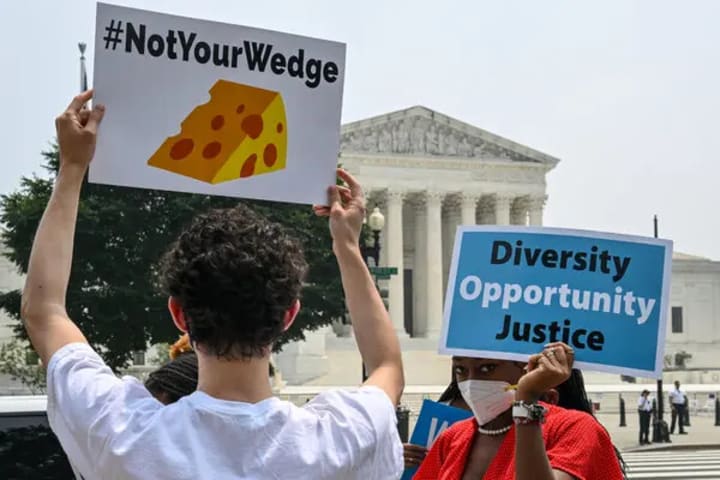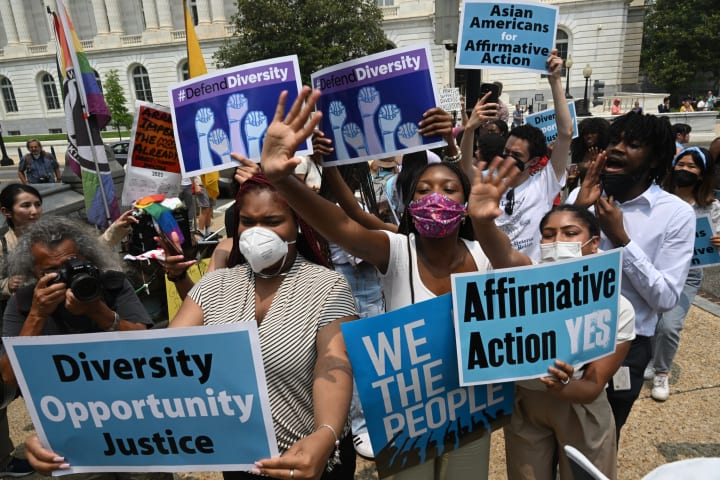"Unlock Your Full Potential: The Surprising Secret to Boosting Productivity and Achieving Success!"
"Unleash the Power Within You and Rise to New Heights of Success"

The New York Times website on June 30, 2023. The article, titled "Hiring Without Affirmative Action: A Shift in Economic Policy," discusses the changing dynamics of hiring practices and affirmative action policies in the United States.
The article highlights the shift in economic policy away from affirmative action and towards merit-based hiring practices. It explores the reasons behind this shift, including changing public opinion, legal challenges to affirmative action, and the desire for a more equitable and inclusive society.
Furthermore, the article discusses how this change affects various sectors and demographics. It acknowledges the concerns of those who worry that eliminating affirmative action could lead to a lack of diversity and inclusion in the workplace. The article also mentions potential benefits of merit-based hiring, such as increased productivity and improved competitiveness.
Overall, the article presents a balanced view of the topic, examining both the advantages and disadvantages of shifting away from affirmative action. It provides insight into the ongoing debates and developments in hiring practices and their impact on the economy and society as a whole.
The article explores the changing landscape of hiring practices in the United States, with a specific focus on the decline of affirmative action policies. It offers a comprehensive overview of the reasons behind this shift and the potential consequences it may have on workforce diversity and economic outcomes.

Affirmative Action Policies in Hiring Remain Controversial," published on June 30, 2023, explores the ongoing debate surrounding affirmative action in the hiring process.
The article highlights the persisting controversy and divided opinions regarding affirmative action. It mentions that although affirmative action policies were initially implemented to promote diversity and address historical inequalities, they have faced legal challenges and criticism from various perspectives. Some argue that affirmative action is necessary to ensure equal opportunities and remedy past discrimination. On the other hand, opponents believe that it promotes reverse discrimination and compromises meritocracy.
The article mentions recent developments in affirmative action cases, such as the Supreme Court's consideration of a challenge to affirmative action policies at a university and the potential impact of the ruling on future hiring practices. It also discusses the complexity of implementing and evaluating affirmative action, including the difficulty in measuring its effectiveness and potential unintended consequences.
Overall, the article provides a balanced overview of the ongoing controversy surrounding affirmative action in hiring. It highlights the multiple perspectives and legal challenges involved in this topic, reflecting the ongoing societal debate on the effectiveness and fairness of these policies.

The report highlights the resurgence of affirmative action as companies face increasing pressure to address diversity gaps in their workforce. Advocates argue that such policies help level the playing field for underrepresented groups, such as minorities and women, who have historically faced discrimination in employment opportunities.
However, the article also acknowledges the opposing viewpoint that affirmative action can be seen as a form of reverse discrimination, potentially disadvantaging other candidates based on their race or gender. This perspective has led to various legal challenges to such policies.
The analysis further examines how some companies are implementing alternative approaches to enhance diversity, including blind hiring practices, expanding recruitment networks, and investing in diversity training.
Overall, the New York Times article offers an insightful overview of the complexities and ongoing discussions surrounding affirmative action in hiring practices. It provides readers with a comprehensive understanding of the current state of affairs and the efforts being made by companies to foster inclusive workplaces while navigating the legal and social implications of affirmative action policies.
In conclusion, the article emphasizes the significance of the Supreme Court decision on affirmative action and its potential to shape hiring practices in the United States. It highlights the broader implications for diversity, equality, and the economy.
About the Creator
Enjoyed the story? Support the Creator.
Subscribe for free to receive all their stories in your feed. You could also pledge your support or give them a one-off tip, letting them know you appreciate their work.





Comments
There are no comments for this story
Be the first to respond and start the conversation.